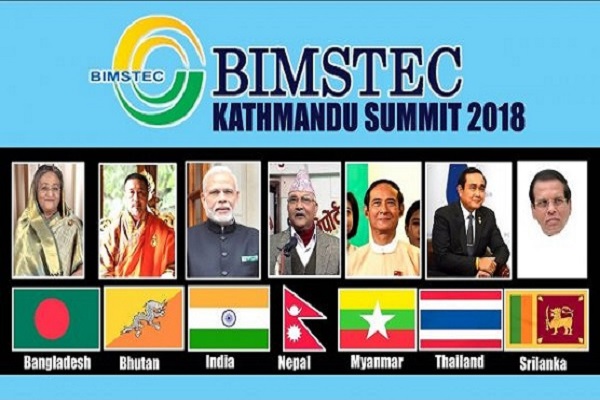The 4th BIMSTEC Summit concluded in Kathmandu with signing and adoption of Kathmandu Declaration by all the seven members (India, Nepal, Bangladesh, Bhutan, Sri Lanka, Myanmar and Thailand).
Kathmandu Declaration
- 18-point Kathmandu Declaration aims to enhance effectiveness of BIMSTEC Secretariat by engaging it in various technical and economic activities in the region.
- It acknowledges importance of trade and investment as one of major contributing factors for fostering economic and social development in the region.
- It also deplored terrorist attacks in all parts of the world, including in BIMSTEC countries, and strongly condemned terrorism in all its forms.
- It also reiterated strong commitment of BIMSTEC countries to combat terrorism and called upon all countries to devise comprehensive approach in this regard.
- Member countries also agreed to expedite conclusion of BIMSTEC Convention on Mutual Legal Assistance in Criminal Matters and called upon member states for its early ratification.
- It also expressed satisfaction that many member states have ratified BIMSTEC Convention on Cooperation in Combating International Terrorism, Transnational Organized Crime and Illicit Drug Trafficking.
- BIMSTEC countries also agreed to establish seamless multi-modal transportation linkages and smooth, synchronised and simplified transit facilities through the development, expansion and modernisation of highways, railways, waterways, sea routes and airways in the region.
- They also decided to speed up efforts to conclude BIMSTEC Coastal Shipping Agreement and BIMSTEC Motor Vehicle Agreement as early as possible taking into account special circumstances and needs of the member states.
- BIMSTEC countries also decided for early conclusion of BIMSTEC Free Trade Area (FTA) negotiations, and directed the BIMSTEC Trade and Economic Ministerial Meeting and its subsidiary bodies, including Trade Negotiating Committee, to expedite finalisation of all related agreements of FTA as early as possible.
- BIMSTEC countries also called for exploring possibility of establishing BIMSTEC Development Fund with voluntary contributions from member states. The fund will be utilised for research and planning of BIMSTEC and financing of projects, and other activities of regional organisation.

Analysis of Summit:
- Work begins now on drafting a charter for BIMSTEC.
- A Permanent Working Committee will be set up to provide direction during the period between two summits and also to prepare the Rules of Procedure.
- The Secretariat has been promised additional financial and human resources and enhancement of its role to coordinate, monitor and facilitate the grouping’s activities.
- As the institution has been handicapped due to lack of financial muscle, the leaders took the bold decision to establish the BIMSTEC Development Fund.
- A push to increase its visibility and stature in the international fora will also be made.
- Recognising that 16 areas of cooperation represent too wide a spectrum, the BIMSTEC governments will make a serious endeavour to review, restructure and rationalise various sectors, identifying a few core areas.
- In this exercise, Thailand has proposed a new strategy of five pillars (viz. connectivity, trade and investment, people-to-people contacts, security, and science and technology). This will be considered, although the difficulty in dropping specific sectors dear to individual member-states should not be minimised.
Concerns with respect to BIMSTEC
- Fourteen years after signing the framework agreement on Free Trade Area (FTA), the leaders could only renew their “commitment to an early conclusion” of FTA negotiations.
- The Thai Prime Minister bravely urged participants to accept making BIMSTEC a Free Trade Zone by 2021 as “our common goal”, but this did not find a place in the summit declaration.
- The Myanmar President pointed out that the grouping had established its Energy Centre in 2009, but it was still struggling for the “early operationalisation” of the Centre.
Conclusion
- The summit articulated a vision for the Bay of Bengal Region heading towards a peaceful, prosperous and sustainable future. The region is now widely viewed as a common space for security, connectivity and development.